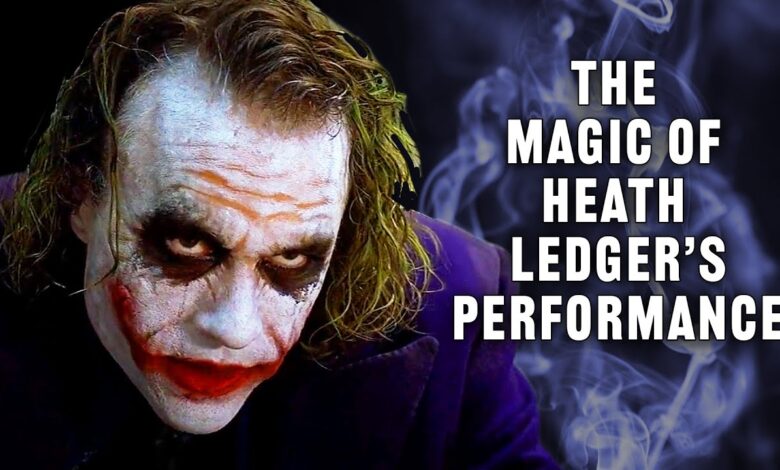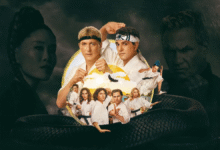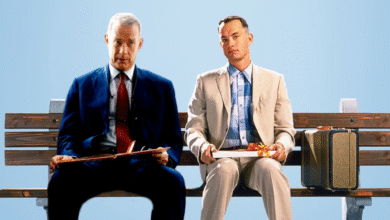Heath Ledger’s Joker: A Legendary Performance That Changed Cinema Forever

Explore the iconic portrayal of the Joker by Heath Ledger. Heath Ledger’s Joker Discover what made his performance unforgettable, its impact on pop culture, and why it’s considered one of the greatest roles in film history.
Introduction: The Legacy of Heath Ledger’s Joker
When we talk about unforgettable movie villains, it’s impossible not to mention Heath Ledger’s Joker. From the first moment he appeared on screen in “The Dark Knight,” Ledger redefined what it meant to be a comic book villain. His take was dark, chaotic, and disturbingly real. This wasn’t just another comic book character—this was a full-fledged psychological enigma that left audiences and critics in awe.
Ledger’s Joker has become a benchmark for cinematic villainy. Whether you’re a die-hard Batman fan or just someone who appreciates incredible acting, there’s no denying the cultural impact of his performance. It was eerie, intense, and most of all, it felt real. That raw authenticity is what made this version of the Joker stand the test of time.
The Preparation Behind the Madness
Heath Ledger didn’t just play the Joker; he became the Joker. To prepare for the role, Ledger isolated himself in a hotel room for weeks. He kept a journal where he explored the Joker’s psyche, scribbling chaotic notes, ideas, and even drawings that reflected the clown prince of crime’s mental instability. This wasn’t method acting in the traditional sense—it was more personal, more psychological.
His dedication was obsessive but necessary. The Joker, as written by Christopher Nolan and his team, was not meant to be a typical villain. He was a symbol of anarchy, a walking embodiment of chaos. Ledger took that concept and ran with it. He wanted the Joker to be unpredictable and terrifying—but also believable. That depth took hard work, and it’s why the character still resonates today.
Redefining the Joker Archetype
Before Ledger, there had been several portrayals of the Joker, most notably Jack Nicholson’s theatrical and quirky version in Tim Burton’s 1989 “Batman.” While Nicholson’s Joker was memorable, it leaned more toward comic book flamboyance. Ledger flipped the script. His Joker wasn’t a goofy prankster—he was a cold-blooded agent of chaos.
What made this Joker unique was his complete lack of a backstory. He offers conflicting tales about his scars, making it clear that he’s toying with everyone, even the audience. He’s unpredictable, which makes him dangerous. This lack of origin made him more of a force of nature than a person. Ledger’s performance emphasized that, and it worked brilliantly.
Christopher Nolan’s Vision and Ledger’s Execution
Director Christopher Nolan had a very specific vision for “The Dark Knight” and the Joker character. He didn’t want a campy villain; he wanted something that could exist in the real world. A terrorist, not a trickster. Ledger understood this from day one and tailored his performance accordingly.
Nolan allowed Ledger the creative freedom to mold the character, and Ledger responded by pushing the limits. From the Joker’s voice—nasally, high-pitched, with unsettling pauses—to his slouched posture and twitchy eyes, every aspect was meticulously crafted. Nolan and Ledger together created a Joker that felt terrifying because he seemed plausible.
The Joker’s Look: A Visual Rebellion
Heath Ledger’s Joker looked nothing like his comic book predecessors. Gone was the sleek, clean-cut image. Instead, we got messy green hair, smeared white makeup, and a Glasgow smile carved into his cheeks. It was dirty, gritty, and symbolic.
The makeup was deliberately smudged, applied with Ledger’s own hands to give it a DIY vibe. His clothes were worn and mismatched, signaling a lack of concern for appearance or social norms. This Joker didn’t care about looks—he cared about chaos. His appearance reflected his mental state: fractured, dirty, and unpredictable.
Quotes That Shook the World

Ledger’s Joker delivered some of the most iconic lines in film history. Lines like “Why so serious?”, “Let’s put a smile on that face,” and “You have nothing, nothing to threaten me with” have become part of pop culture.
These quotes weren’t just catchy—they were chilling. They revealed a character who was always ten steps ahead, someone who wasn’t just evil but philosophically opposed to order and morality. Each line was delivered with a precision that made them unforgettable.
| Quote | Impact |
|---|---|
| “Why so serious?” | Became a cultural catchphrase and symbol of chaotic energy |
| “You have nothing to threaten me with.” | Showed the Joker’s psychological edge |
| “Introduce a little anarchy…” | Highlighted his disdain for structure and rules |
The Joker’s Philosophy: Chaos as a Weapon
Heath Ledger’s Joker wasn’t just evil—he had a philosophy. He believed that beneath the surface, everyone is just as chaotic and savage as he is. His goal wasn’t money or power; it was to expose the fragility of societal norms.
Throughout “The Dark Knight,” we see him engineer social experiments: blowing up hospitals, pitting boats full of people against each other, and testing Batman’s moral limits. He’s trying to prove a point, not win a war. That’s what makes him terrifying—he genuinely believes he’s revealing a deeper truth about humanity.
Heath Ledger’s Tragic Death and Posthumous Oscar
Tragically, Heath Ledger passed away before the release of “The Dark Knight,” and his death added a layer of mythos to the performance. Many speculated about whether the role contributed to his mental health decline, though those closest to him have said he was simply committed to his craft.
Ledger was posthumously awarded the Academy Award for Best Supporting Actor—a rare honor that speaks volumes about the impact of his performance. It was a moment of both celebration and sorrow, cementing his place in cinematic history.
Cultural Impact and Continued Influence
Ledger’s Joker changed how villains are portrayed in movies. He proved that a comic book character could be layered, nuanced, and even Oscar-worthy. Since then, we’ve seen a shift in how superhero films are written and directed. Villains are no longer one-dimensional—they’re complex, tragic, and deeply human.
Even actors like Joaquin Phoenix, who won an Oscar for playing the Joker in a standalone film, have cited Ledger’s performance as a benchmark. His influence can be felt in everything from TV shows to memes to college psychology courses. It’s that deep.
Behind-the-Scenes Trivia and Easter Eggs
There are a lot of fascinating tidbits about Ledger’s performance that fans love to revisit. For example, the infamous hospital explosion scene had a real technical glitch—which Ledger turned into a moment of improvisational genius. The explosion delayed, and Ledger, staying in character, tapped the remote and flinched comedically before walking away.
Another fun fact: the Joker’s diary, which Ledger created during his character prep, contained references to hyenas, clowns, and other dark imagery. It was a peek into the chaotic mind of the character—and the actor.
Fan Theories and Interpretations
Over the years, fans have developed countless theories about Ledger’s Joker. One popular theory is that he was a former soldier with PTSD, explaining his combat skills and disdain for authority. Others speculate he’s a metaphor for Batman’s inner darkness.
These theories, while unconfirmed, speak to the depth and ambiguity of the character. Ledger left just enough unsaid that viewers could project their own interpretations onto him. That’s the mark of a truly compelling performance.
Why Heath Ledger’s Joker Still Resonates

It’s been years since “The Dark Knight” hit theaters, but Heath Ledger’s Joker remains a dominant figure in pop culture. Why? Because the character touches on universal themes: chaos vs. order, morality, fear, and identity.
Heath Ledger tapped into something primal with his performance. It wasn’t just about playing a villain—it was about exploring the darker parts of the human condition. That’s why people still talk about it. That’s why new generations continue to discover and be haunted by it.
FAQs
What made Heath Ledger’s Joker so iconic?
Heath Ledger’s Joker was iconic due to his raw, chaotic energy and deep psychological complexity. His unpredictable nature, haunting voice, and eerie mannerisms made the character feel frighteningly real.
Did Heath Ledger’s Joker have a backstory?
No, and that was intentional. The Joker tells different versions of how he got his scars, which adds to his mystique and makes him even more unsettling.
Did the role contribute to Heath Ledger’s death?
There is no confirmed evidence that the role directly caused his death. However, the intense preparation may have affected his sleep and mental health. His family has clarified he was not depressed because of the role.
How did Heath Ledger prepare for the Joker role?
Heath Ledger isolated himself for weeks, kept a Joker diary, and studied various influences like Malcolm McDowell’s Alex in “A Clockwork Orange.” He immersed himself deeply into the character.
Did Heath Ledger win an Oscar for the Joker?
Yes, he posthumously won the Academy Award for Best Supporting Actor in 2009 for his role in “The Dark Knight.”
Conclusion: A Performance That Redefined Villainy
Heath Ledger’s Joker wasn’t just a role—it was a transformation that left an indelible mark on cinema. His performance challenged what we expect from villains and what we demand from actors. It was raw, haunting, and utterly unforgettable. Even today, it continues to inspire, intrigue, and terrify. That’s the legacy of Heath Ledger’s Joker—a role that changed everything.





